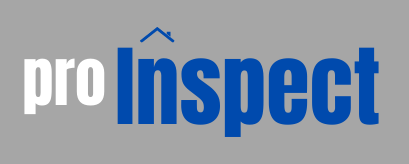Hello and welcome. So today we are going to explain a few things:
What is a Pre-drywall Inspection?
When is your home ready for an inspection?
What is included?
The most common findings.
And we will talk about the inspection report and choosing an inspector.
WHAT IS A PRE-DRYWALL INSPECTION?
If you are watching this video, chances are you are having a home built from scratch. If you are, congratulations! New homes are great. Everything is new. Everything is shiny, and everything comes with a warranty.
You’re also probably wondering how to go about making sure you get what you pay for in a new home. And that is where a predrywall inspection comes in.
In my personal and completely biased opinion, this is the most important inspection you can have done on your new home. Even more important than the walk through or warranty inspections. Trust me, finding the issues while they’re nice and exposed is far better than trying to find them once they become a problem and are hidden by insulation and drywall.
WHEN IS YOUR HOME READY FOR A PRE-DRYWALL INSPECTION?
So, what exactly is a predrywall inspection? Well, lets actually start with when. Its an inspection that gets performed right before the insulation and drywall are installed.
The home won’t have any stucco on yet, but you will see foam and the metal lath, which some people to refer to as Chicken Wire. And of course with that being done, the windows and exterior flashing will be in place. The roof won’t be complete, but the underlayment or tar paper will be on and the roof tiles will be stacked in piles on the roof. Technically, the home will be what we called “dried-in”. That means if it rains, the home should not leak.
On the inside of the home, all the rough plumbing, electrical, and mechanical will be in place. That includes supply and drain piping, all electrical wiring and boxes, and the furnace, air handler and duct work will be installed.
WHAT IS INCLUDED IN A PRE-DRYWALL INSPECTION?
So now lets get to what the inspection covers.
There are 3 primary areas of focus on this inspection.
- Exterior
- Load Path
- Rough In
The exterior inspection is where we check all the components that make the home “dried-in”. That includes the roof covering, flashings, foam, and moisture barrier. We also inspect the exposed portions of the foundation or slab. It will typically be whats called a post tension slab so we need to make there isnt any damage at the cables.
The next 2 phases, the Load Path and Rough-in are a bit of a combo deal. First, the framing creates what we call a load path. All the weight from the roof has to transfer to the walls, then that transfers to the slab, and that transfers to the earth. There are certain framing methods, hardware, and fire protection that have to be in place to make all that happen, and so we inspect for that.
The other half of that is the Rough-in. Once the framing is done and load path is complete, it all gets cut and drilled and knocked around so that all the rough electrical, plumbing, and mechanical can be installed through it. That requires more hardware and more protection. So we have to inspect to make sure the load path is intact, while making sure the rough components are properly installed, and also properly protected.
So basically we inspect every single wall cavity, every visible point of attachment, every piece of hardware, and the list goes on.
THE MOST COMMON FINDINGS
Lets say you want to skip the predrywall inspection. What are the risks? First of all I recommend speaking to anyone who didn’t get one done and is now experiencing issues with their new home that are difficult to pinpoint.
But to really get into it, let’s get over some of the most common issues I find.
On the exterior it would be gaps in the moisture barrier, foam. and exterior flashings. We also see improperly installed or sealed post tension tendons at the foundation. We also use a drone to inspect the roof and flashings associated with that. And yes, we are licensed to use a drone for commercial purposes.
On the interior, there can be a lot, but one of the big ones is the fasteners from the exterior penetrating electrical wires and supply piping in the wall cavities. Yes, I said that right, nails and staples through your wiring and water pipes. Adding on to that is also improperly protected wiring and piping as they pass through a stud or a truss.
We also see a lot of duct work issues, with ducts being excessively bent, damaged, or having a supply and return register be far too close to each other.
Then there is a lack or proper support for a beam or girder, which is a significant area of weight and needs to be in place. We see improper or inconsistent nailing patterns in shear or load-bearing walls. And looking down, we need to make sure the floor plate is properly secured to the slab.
We also have missing fasteners at the attachment hardware, along with missing fire stop or blocking. And let’s not forget about just sloppy framing altogether, which includes gaps along the load path, excessive bowed studs, and studs and plates that have been excessively cut or notched.
THE REPORT AND THE INSPECTOR
All of these items have to be put into a report that is easy to read. What I tell my clients is that the report is written so that the builder can use it as punch list, but also so the client can use it to locate the issues and help ensure they were corrected. As an added bonus, our report will include a video walk through of every room so you can always refer back later to see where all the studs, wires, and water pipes are.
So like I said in the beginning, the predrywall inspection is not one to overlook. When you’re ready to get one, make sure you ask the inspector the right questions.
Now Its one thing to inspect a finished home, but when the drywall is removed, there is an entirely new world of issues to look for, and it really helps knowing how it all goes together to determine how it could fall apart.
One thing I like people to be aware of is that in Arizona, where I’m based, we do certify and regulate inspectors. There is a defined standards of practice we have to adhere to. However, that only refers to completed homes. That means that there is no jurisdiction for predrywall inspections, and each inspector can perform that inspection to whatever standards they see fit. That changes things a bit, doesn’t it?
Now I am lucky. I just happened to start framing homes right out of high school and it eventually led me here. I also studied building safety and technology after becoming an inspector. So construction is just something I know.
I see far too many inspectors out there who took a 1 or 2 day class or shadowed another inspector on one or two predrywall inspections, and now they’re out they’re out there performing them on their own. We all have a right to make a buck, but I have to say in my opinion, having some sort of construction experience is vital for this kind of inspection. If they don’t have that, I’d hope they have a lot of training…..and I mean a lot.
So we hope you found this helpful. And when the time comes that your new home is getting built, we hope you reach out to us so we can answer your questions and hopefully get you on the calendar.
Thats it for today. But if you want to stay on top of what we are doing and what we are finding out there, please visit our website at www.proinspectaz.com, or give us a follow on Instagram at Proinspect_az and Facebook under the same name. Take care


